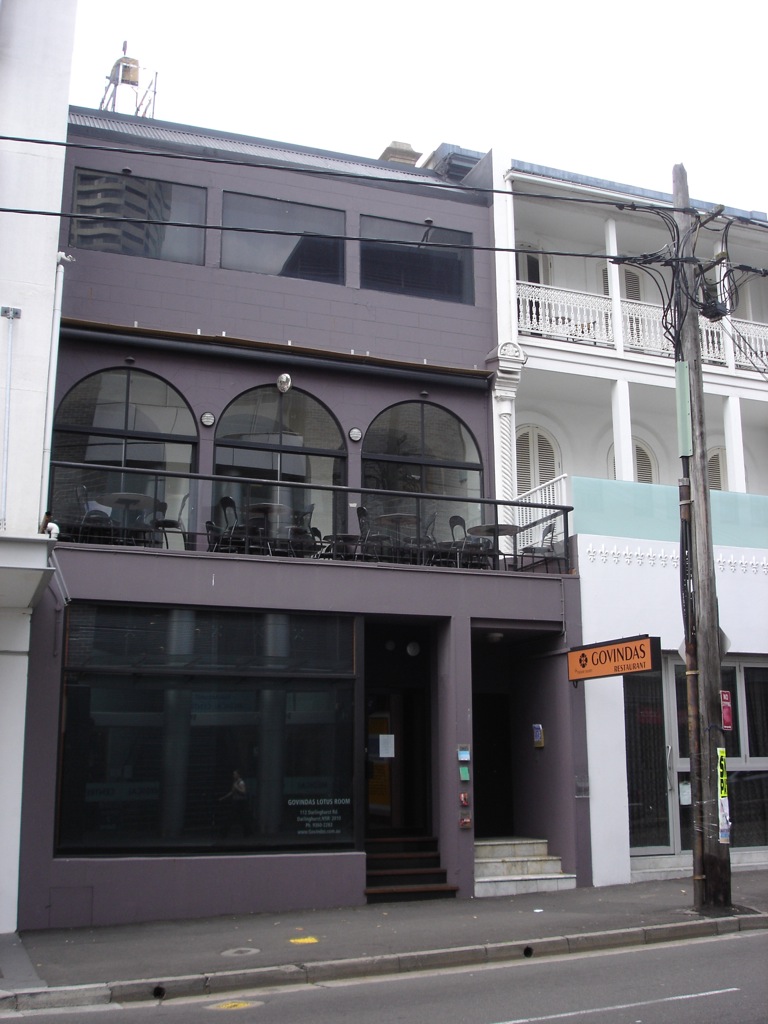Hare Krishna devotees first came to Sydney in 1970. In this interview Tony Kaye talks about his personal transition from lawyer to monk, the movement’s links with the counter-culture, and its difficulties in finding a stable location in Sydney. In the excerpt below he describes the special character of Darlinghurst where the movement’s temple and residences are now permanently located.
And then in ’79 we came here to Darlinghurst and set up the temple here. This was an old squat, really. So we bought this temple for around about two hundred and eighty thousand dollars in 1979, and we renovated it according to our requirements and we acquired a lot of property around the area for the ashrams and for the devotee community and so, yes, we kind of put our roots down here and we were accepted within the community. Everybody just wanted to go somewhere where they were accepted as a community, where we could just put down our roots and stay; the neighbours wouldn’t complain, where the councils wouldn’t complain, where we would just kind of be left alone and peaceful and do our thing and, hey, Darlinghurst at that time you could do whatever you want, just like you can today. It’s like a very forgiving neighbourhood, it’s a very generous neighbourhood and I love Darlinghurst in terms of living; I think it’s a wonderful place because people don’t have attitude, people can be who you are and without any trips being laid; everybody can just be themselves in Darlinghurst so it’s got that character to it, Darlinghurst. It’s all-forgiving and all-accepting; it’s part of the culture of Darlinghurst. We just totally moved in here, become a part of the scene and here we are like thirty three years later we’re still a part of the scene here.



